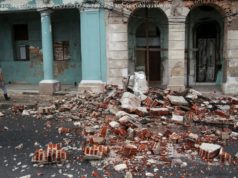Allegations of research fakery at a leading cancer center have turned a spotlight on scientific integrity and the amateur sleuths uncovering image manipulation in published research.
Allegations of research fakery at a leading cancer center have turned a spotlight on scientific integrity and the amateur sleuths uncovering image manipulation in published research.
Dana-Farber Cancer Institute, a Harvard Medical School affiliate, announced Jan. 22 it’s requesting retractions and corrections of scientific papers after a British blogger flagged problems in early January.
The blogger, 32-year-old Sholto David, of Pontypridd, Wales, is a scientist-sleuth who detects cut-and-paste image manipulation in published scientific papers.
He’s not the only hobbyist poking through pixels. Other champions of scientific integrity are keeping researchers and science journals on their toes. They use special software, oversize computer monitors and their eagle eyes to find flipped, duplicated and stretched images, along with potential plagiarism.
A look at the situation at Dana-Farber and the sleuths hunting sloppy errors and outright fabrications:
WHAT HAPPENED AT DANA-FARBER?
In a Jan. 2 blog post, Sholto David presented suspicious images from more than 30 published papers by four Dana-Farber scientists, including CEO Laurie Glimcher and COO William Hahn.
Many images appeared to have duplicated segments that would make the scientists’ results look stronger. The papers under scrutiny involve lab research on the workings of cells. One involved samples from bone marrow from human volunteers.
The blog post included problems spotted by David and others previously exposed by sleuths on PubPeer, a site that allows anonymous comments on scientific papers.
Student journalists at The Harvard Crimson covered the story on Jan.
Домой
United States
USA — Science Science sleuths are using technology to find fakery and plagiarism in published...






